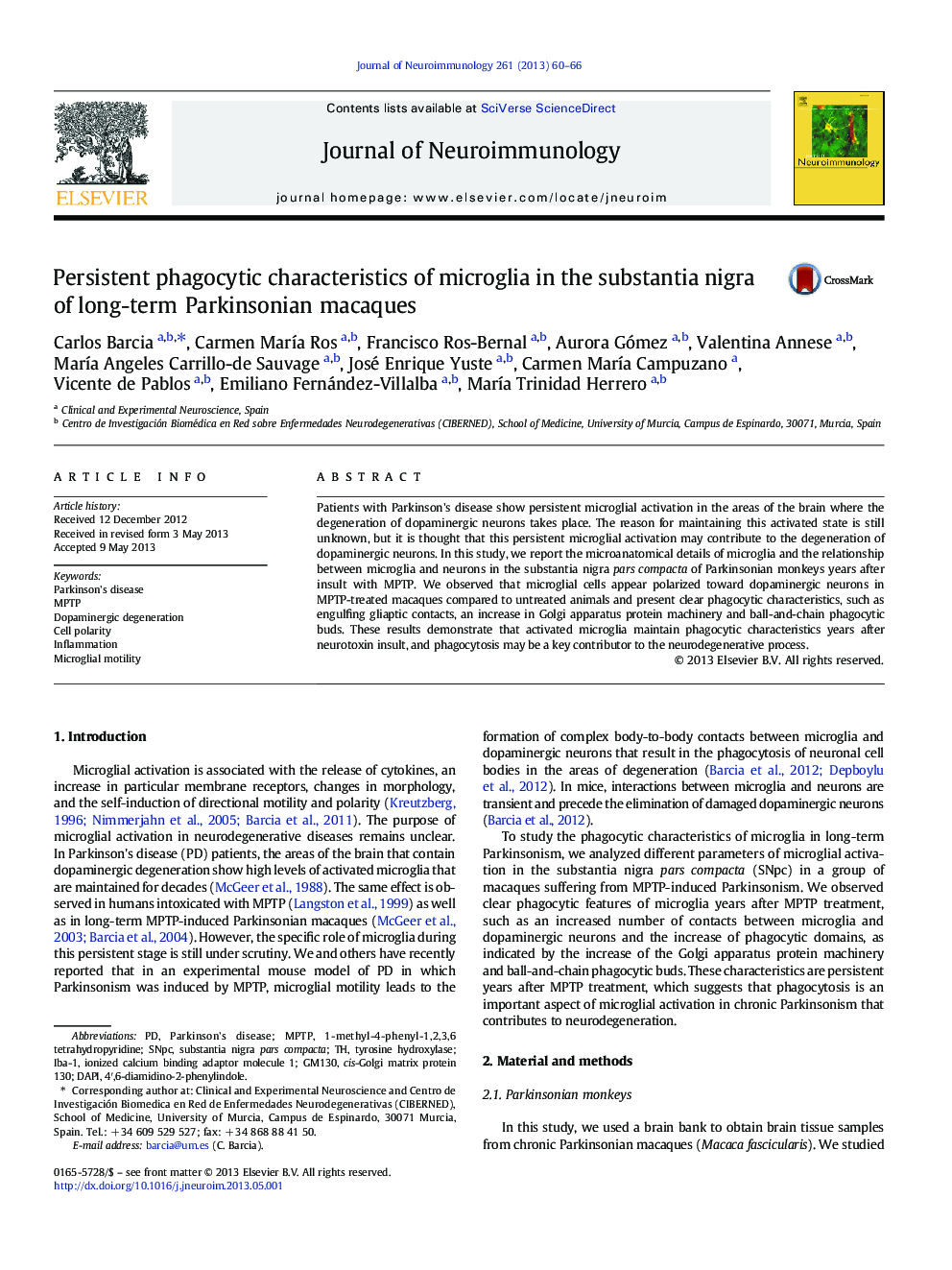| کد مقاله | کد نشریه | سال انتشار | مقاله انگلیسی | نسخه تمام متن |
|---|---|---|---|---|
| 6020497 | 1580413 | 2013 | 7 صفحه PDF | دانلود رایگان |

- Contacts between microglial cells and dopaminergic neurons are elevated in the SNpc of Parkinsonian monkeys years after the MPTP.
- The area of the highest dopaminergic cell death shows increased number of microglia-neuron gliaptic (body-to-body) contacts.
- Increase of Golgi apparatus and phagocytic buds are observed in microglial cells in the SNpc of chronic Parkinsonian macaques.
- Phagocytosis events are seen in the SNpc of Parkinsonian macaques years after the dopaminergic insult.
Patients with Parkinson's disease show persistent microglial activation in the areas of the brain where the degeneration of dopaminergic neurons takes place. The reason for maintaining this activated state is still unknown, but it is thought that this persistent microglial activation may contribute to the degeneration of dopaminergic neurons. In this study, we report the microanatomical details of microglia and the relationship between microglia and neurons in the substantia nigra pars compacta of Parkinsonian monkeys years after insult with MPTP. We observed that microglial cells appear polarized toward dopaminergic neurons in MPTP-treated macaques compared to untreated animals and present clear phagocytic characteristics, such as engulfing gliaptic contacts, an increase in Golgi apparatus protein machinery and ball-and-chain phagocytic buds. These results demonstrate that activated microglia maintain phagocytic characteristics years after neurotoxin insult, and phagocytosis may be a key contributor to the neurodegenerative process.
Journal: Journal of Neuroimmunology - Volume 261, Issues 1â2, 15 August 2013, Pages 60-66